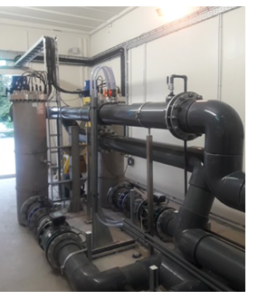
Blog
Why Use UV Disinfection Technology
By Mahsa Foolad – Coftec

The question of why use UV disinfection technology for water treatment is commonly asked and this post will attempt to provide some answers to that question.
Ultraviolet (UV) light is a component of sunlight and constitiutes approximately 10% of the total light generated by the sun. UV is a form of electromagnetic energy and consists of wavelengths in the range of 10 nm to 400 nm. This range or spectrum is further segmented into UV-A (light in spectrum ranging from 320-400nm), UV-B (light ranging from 280-320nm), and UV-C light which lies in the 200-280nm spectrum.
Ultraviolet light is a known disinfectant for air, non-porous surfaces and is commonly used to disinfect bacteria, viruses, moulds, algae, and other microorganisms in both water and wastewater streams. DNA & RNA is the genetic material that makes up all living organisms, controlling their growth, development, functioning and reproduction. Microbes are particularly sensitive to UV-C light and when adsorbed, this light causes critical damage to the RNA, DNA and proteins of the microbe. On impact, the UV light penetrates the cell wall of an organism, inactivates the microbe, destroys the cell’s ability to reproduce and, by default, the potential of the microbe to infect consumers of the treated water.
A key aspect of UV light as a germ-killing technology is that microbes are unable to build immunity to it because it targets bacteria and viruses at that DNA and RNA level. Additional benefits of UV treatment include disinfection without the use of chemicals, there are no residual tastes or odours as the water itself is not altered in any way, low maintenance associated with the technology and the method is cost-effective.
UV disinfection is considered as a part of a multi-barrier approach to protect against chlorine resistant biological contaminants that can prove hazardous to human health. Specifically, UV irradiation is known to be particularly effective in Cryptosporidium inactivation. This microrobe is known to be resistant to chlorination, due to the thickness of its cell wall. High doses of UV radiation have been found to be effective in deactivating Cryptosporidium and the use of this approach in the treatment of the microbe is common.
These are just some answers to the question as to why use UV disinfection technology in the water treatment process.
Coftec design, deliver, install, commission and operate a range of UV disinfection systems for municipal and industrial water and wastewater applications. Customer service is at the heart of our operations – the Coftec in-house design team works with the client to build the optimum solution based on specific project requirements and our experienced installation and commissioning team ensures the seamless integration of our technology.
Coftec can combine additional water purification processes with UV disinfection to provide end-to-end treatment. UV system optimisation can also be achieved through added through flow/level monitoring, pressure monitoring, valve monitoring, flow regulation, lamp dimming, fieldbus systems, irradiation and UV-Dose output, remote access to assist in automating and safeguarding the water treatment plant.
Would you like to learn more about our UV water and wastewater disinfection solutions which are available as a modular treatment unit or can be incorporated into the plant itself. Contact Coftec whether designing a new facility or refurbishing, expanding, or bringing an existing facility up to regulatory standards to discuss how we can help in your water disinfection project.
Contact us at info@coftec.ie, tel: +353 (0)91 844356 or via a website inquiry for more details on our water and wastewater treatment solutions.



